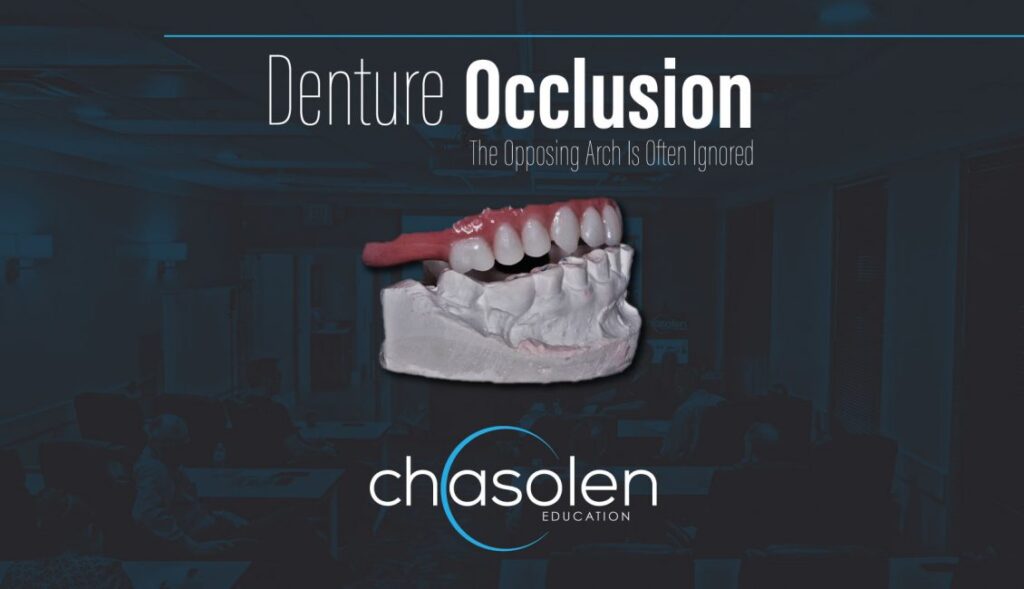Denture occlusion:
Too often, the opposing arch is ignored. I see this all the time.
This opposing occlusion is problematic for many reasons:
- The lower right second molar is an unavoidable interference.
- The existing wear on the lower teeth are concerns for not only the health of the teeth themselves, but the inability to couple the denture set up occlusion to the lower arch without creating occlusal instability.
- The missing #18 and 19 make any attempt at balancing the occlusion impossible.
This is a great example of the use of Hanau’s Quint to understand the implications of the occlusion on stability.
Hanau discussed 5 factors that influence creating a balanced occlusion:
- Condylar inclination
- Incisal guidance
- Orientation of the occlusal plane
- Compensating curve
- Cusp height
Condylar inclination is not alterable. But the understanding of the interplay between the occlusal plane, compensating curve and the cusp of height position is critical to understand how the occlusion will behave during function.
And although the compensating curve is set with denture teeth and not necessarily applicable to this case with lower natural teeth, the point is that not treating this lower occlusion will make success with this upper denture very difficult if not impossible.
This may seem simple and intuitive, but it is amazing how often I see this. And no it’s not a scan, print, mill or implant and bone graft, it is a critical principle that affects the patient’s ability to function and eat normally.
Treat comprehensively. Win the outcome.




